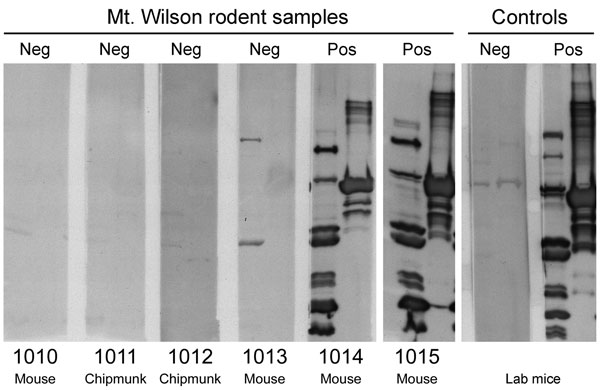Volume 15, Number 7—July 2009
Research
Tick-borne Relapsing Fever and Borrelia hermsii, Los Angeles County, California, USA
Figure 3

Figure 3. Immunoblot analysis of serum samples from brush mice (Peromyscus boylii) and Merriam chipmunks (Tamias merriami) captured at Mt. Wilson Observatory in California, USA. Each sample was tested at a dilution of 1:100 with a whole-cell lysate of Borrelia hermsii MTW-2 isolated from Mt. Wilson (left lane of each membrane) and purified recombinant GlpQ (right lane of each membrane). Results and animal numbers are presented above and below each panel, respectively. Neg, negative; pos, positive.
Page created: November 10, 2010
Page updated: November 10, 2010
Page reviewed: November 10, 2010
The conclusions, findings, and opinions expressed by authors contributing to this journal do not necessarily reflect the official position of the U.S. Department of Health and Human Services, the Public Health Service, the Centers for Disease Control and Prevention, or the authors' affiliated institutions. Use of trade names is for identification only and does not imply endorsement by any of the groups named above.